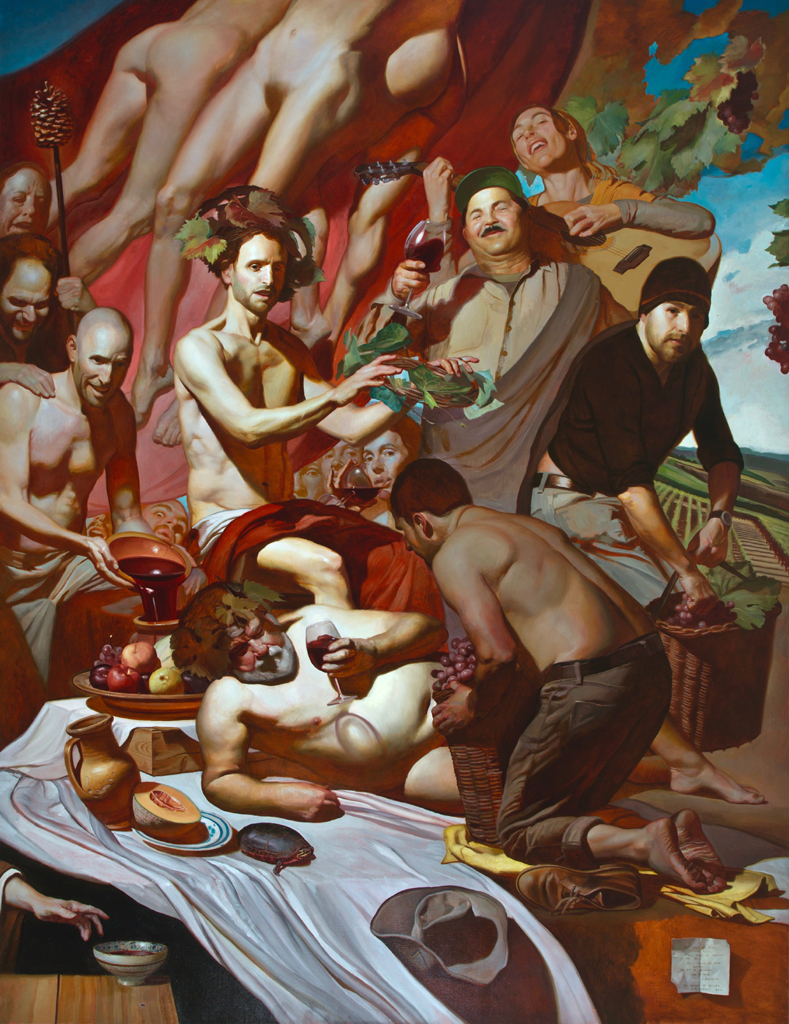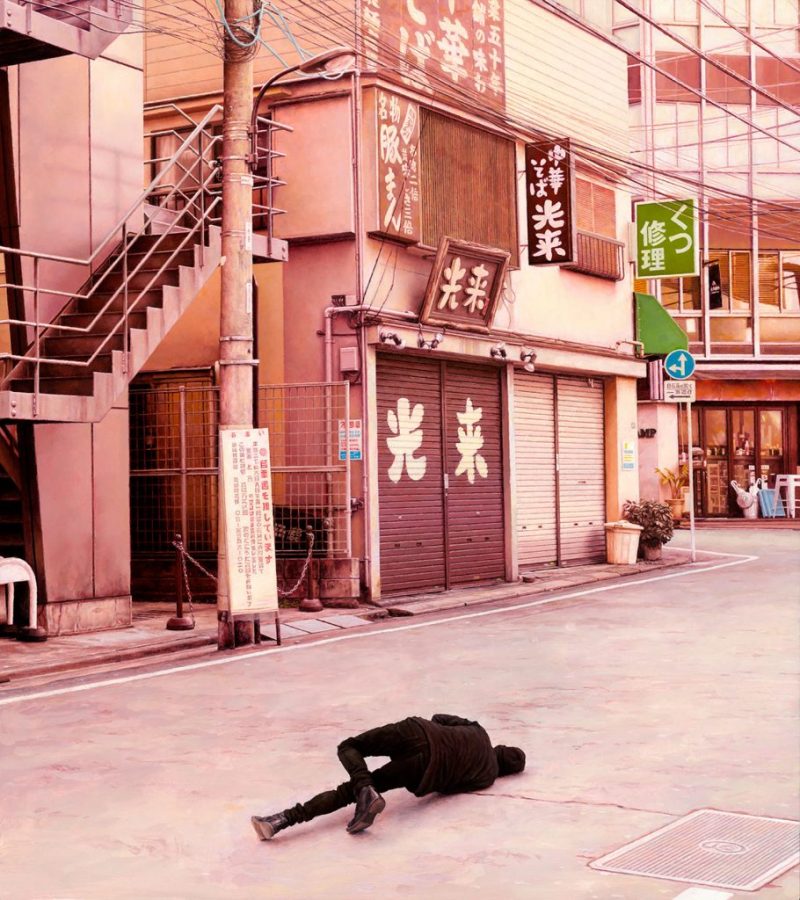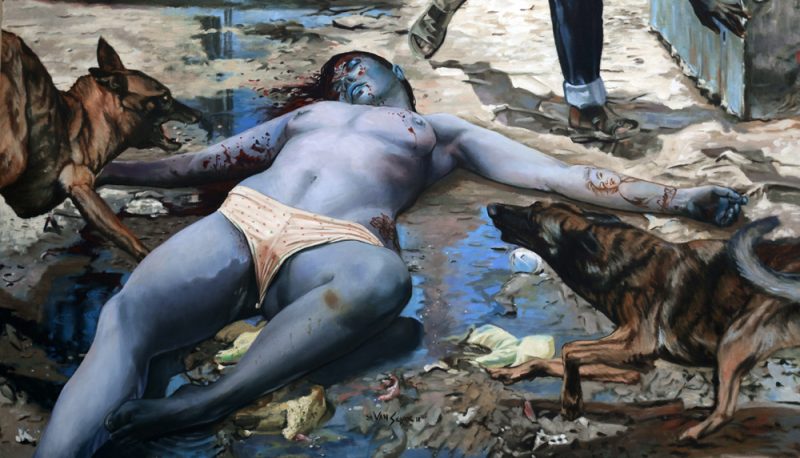This painting is a nod to Velázquez’s painting of the same title (you might know it better as Los Borrachos). Bacchus was the Roman god of wine, agriculture, sexuality, and fertility, equivalent to the Greek god Dionysus. Here he is in the center of the painting serving wine to the vineyard workers and crowning one with a wreath of grape leaves. Bacchus is accompanied by the lounging Silenus (the older, fatter version of Bacchus, who is perpetually drunk). There is plenty of symbolism packed into every corner; a turtle next to Silenus symbolizes sloth. The Bacchante, who are the female devotees of Bacchus, float above and reference Bacchus as the god of sexuality. In the bottom left corner a hand is sneaking into a bowl of grapes, referring to Christianity’s appropriation of the ancient symbol of wine. One of Bacchus’ entourage on the left holds a staff with a pine cone, known as a thyrsos; a symbol of prosperity, fertility, and hedonism.
All in all the painting tells us ‘after a hard day’s work, drink and be merry, but be wary of excess.’




